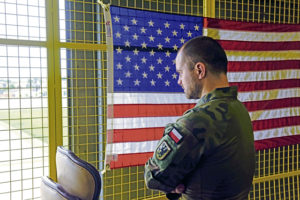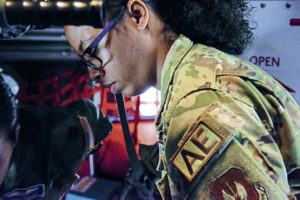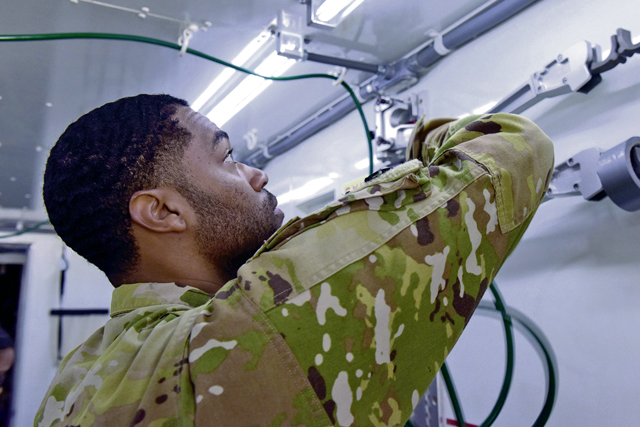
Members of the Polish army and air force visited Ramstein Air Base, to observe the 86th Aeromedical Evacuation Squadron conduct Negatively Pressurized Conex Lite training July 27.
The Polish military saw the training and NPCL demonstration as an opportunity to learn more about the equipment and train with U.S. forces.
“In the face of the pandemic of COVID-19, it’s become quite apparent that the need for medical support from the military is a crucial part of our duty,” said Polish army Lt. Jakub Sobolewski, Inspectorate for Armed Forces Support Medical Division physician and specialist. “We decided that it would be in our best interest to improve our capabilities of medical evacuation, especially for potentially contagious personnel.”
The NPCL was developed as a compact, lightweight version of the Negatively Pressurized Conex. It provides aeromedical care for patients with communicable diseases, including COVID-19, on aircraft with smaller cargo bays.
“The NPCL is very important,” said U.S. Air Force Capt. Justin Stein, a flight nurse assigned to the 86th AES. “It is not applicable only to COVID, but to any viruses or infectious diseases.”
The technology utilizes a negative pressure blower system to circulate clean air between the NPCL and aircraft to minimize transmission of disease to aircrew while transporting patients.

Members of the 86th AES conducted training on contamination and decontamination of the NPCL, airway emergencies and precautions to help keep everyone safe during an aeromedical evacuation.
Polish military doctors and flight nurses partnered with 86th AES Airmen to gain the experience necessary for an efficient evacuation of those infected with COVID-19.
Joint trainings like these strengthen Ramstein Airmen’s relationships with NATO partners and allies and maintain readiness regarding current aeromedical procedures in the ongoing COVID-19 pandemic.
“The purpose of the Polish [army and air force] coming to observe what we do is looking at information sharing as a NATO ally,” Stein said. “The exercise has gone very well. We are also training our own members and making sure they are certified to take care of COVID patients and this exercise has made us much more confident to provide care safely in the air.”




